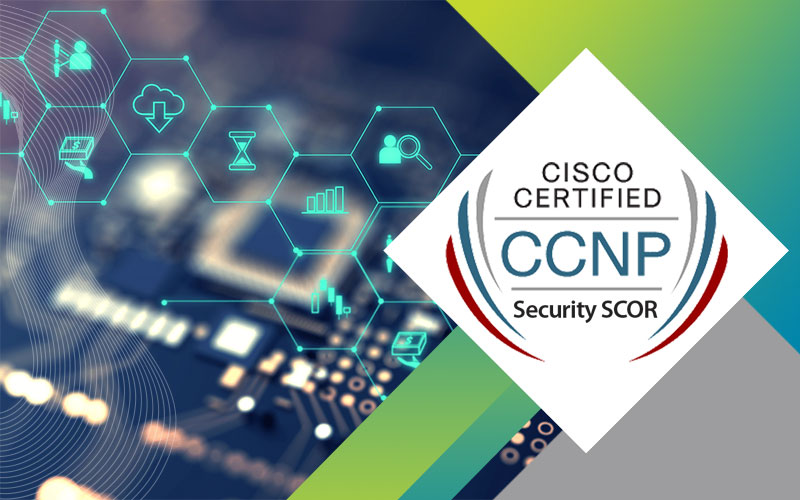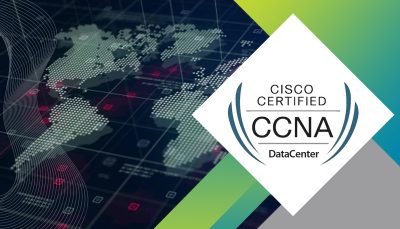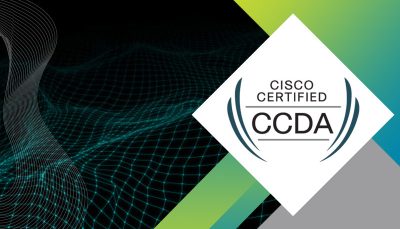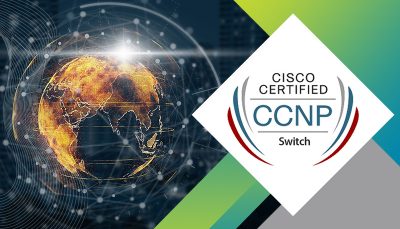
شرح دوره آموزش CCNP Security
دوره CCNP Security (Cisco Certified Network Professional Security) یک برنامه تخصصی و معتبر از سیسکو است که به حرفهایهای شبکه و امنیت سایبری کمک میکند تا مهارتهای لازم برای طراحی، پیادهسازی و مدیریت راهحلهای امنیتی در شبکههای پیچیده را به دست آورند. این دوره به بررسی تکنیکها و ابزارهای امنیتی میپردازد و دانش عمیقتری از مدیریت تهدیدات، سیاستهای امنیتی و واکنش به حوادث ارائه میدهد.
شرکتکنندگان در این دوره با مباحثی همچون امنیت زیرساختهای شبکه، مدیریت دستگاههای امنیتی، و نظارت و تحلیل ترافیک شبکه آشنا میشوند. همچنین، این دوره شامل شبیهسازیهای عملی و پروژههای واقعی است که به یادگیری بهتر و کاربردیتر مفاهیم کمک میکند.
CCNP Security به عنوان یک مدرک پیشرفته، به حرفهایها این امکان را میدهد تا مهارتهای خود را در حوزه امنیت شبکه ارتقا دهند و به طراحی و پیادهسازی راهحلهای امنیتی مؤثر بپردازند. این دوره برای هر کسی که میخواهد در زمینه امنیت شبکه به عنوان یک متخصص توانمند عمل کند، ضروری است و میتواند به ارتقاء فرصتهای شغلی و پیشرفت حرفهای کمک کند.
دوره CCNP Security مربوط به چیست؟
دوره امنیت شبکه CCNP که با نام CCNP Security نیز شناخته میشود، یکی از دورههای پیشرفته و کاربردی سیسکو برای متخصصان امنیت شبکه است. این دوره بهطور جامع به آموزش فرآیندها و راهکارهای ایجاد، پیادهسازی و مدیریت امنیت در شبکههای سیسکو میپردازد.
در این برنامه آموزشی، شرکتکنندگان با اصول امنیتی و تکنیکهای پیشرفتهای آشنا میشوند که به آنها امکان میدهد تا شبکههای سیسکو را از تهدیدات سایبری محافظت کنند. این دوره بهویژه برای افرادی طراحی شده است که قصد دارند در مسیر شغلی مهندسی امنیت شبکه سیسکو گام بردارند.
دوره CCNP Security چیست؟
امنیت مبحثی گسترده است و یکی از مهمترین موضوعاتی است که در زمان طراحی شبکه باید در نظر داشته باشیم. در نظر گرفتن نکات امنیتی هم در شبکههای بیسیم و هم در شبکههای سیمی حائز اهمیت بوده و برای طراحی این شبکهها باید به آن توجه کرد. ایجاد امنیت در شبکه بسته به نوع آن، روشها و زمینههای مختلفی دارد. در مورد شبکههای سیسکو هم ایجاد امنیت بسیار مهم است و به حفظ این شبکه کمک میکند.
در دوره امنیت CCNP، افراد با چگونگی مقابله و جلوگیری از حملات درون شبکه سیسکو آشنا میشوند. انواع حملاتی که درون این شبکه رخ داده و نحوه مقابله با آنها از دیگر مسائلی است که به شرکتکنندگان این دوره آموزش داده میشود. افرادی که در این دوره شرکت میکنند، در نهایت میتوانند به عنوان کارشناس و متخصص امنیت شبکه سیسکو شروع به کار کنند.
اهداف دوره
- مفاهیم و راهبردهای امنیتی اطلاعات را در شبکه تشریح کنید.
- توصیفهای مشترک TCP / IP، برنامههای شبکه و حملات نقطه انتهایی را توصیف میکند.
- چگونگی همکاری فنآوریهای مختلف امنیتی شبکه برای محافظت در برابر حملات، توضیح دهید.
- کنترل دسترسی را روی دستگاه Cisco ASA و فایروال نسل بعدی Cisco Firepower پیادهسازی کنید.
- ویژگیها و کارکردهای امنیت محتوای اصلی ایمیل ارائه شده توسط لوازم الکترونیکی امنیتی سیسکو را توصیف و پیادهسازی کنید.
- ویژگیها و کارکردهای امنیتی محتوای وب را که توسط Cisco Web Security Appliance ارائه شده است، توصیف و پیادهسازی کنید.
- ویژگیهای امنیتی Cisco Umbrella، مدلهای استقرار، مدیریت سیاست و کنسول Investigate را توصیف میکند.
- VPNها را وارد کنید و راهحلها و الگوریتمهای رمزنگاری را توصیف کنید.
- راهحلهای اتصال سایت به سایت امن سیسکو را توصیف کنید و نحوه استقرار سیستم عامل مجازی Cisco Internet Cisco (Cisco IOS) رابط مجازی تونل (VTI) مبتنی بر نقطه به نقطه VPN های IPsec و IP-نقطه به نقطه IPsec VPN را در این قسمت توضیح دهید. فایروال نسل بعدی Cisco ASA و Cisco Firepower (NGFW)
- توصیف و بکارگیری راهحلهای اتصال از راه دور ایمن سیسکو و توصیف نحوه پیکربندی احراز هویت 802.1X و پروتکل تایید توسعه گسترده (EAP) ارائه دهید.
- درک اساسی از امنیت نقطه پایانی را ارائه دهید و از Advanced Malware Protection (AMP) برای معماری Endpoints و ویژگیهای اساسی توصیف کنید.
- دفاعهای مختلف را در دستگاههای سیسکو که از صفحه کنترل و مدیریت محافظت میکنند مرور کنید.
- کنترلهای صفحه Air Fly نرم افزار Cisco IOS Layer 2 و Layer 3 را پیکربندی و تایید کنید
- راهحلهای ابر Cisco Stealthwatch Enterprise و Stealthwatch Cloud را توصیف میکند.
- اصول اولیه محاسبات ابری و حملات ابری معمول و نحوه برقراری امنیت محیط ابری را شرح دهید.
پیشنیاز
- مهارت و دانش در سطح Cisco Solutions (CCNA) v1.0
- آشنایی با شبکههای اترنت و TCP / IP
- شناخت سیستم عامل ویندوز
- شناخت شبکه و مفاهیم Cisco IOS
- آشنایی با مبانی مفاهیم امنیتی شبکه (+Security)
مخاطبین دوره CCNP Security SCOR
- مهندس امنیت
- مهندس شبکه
- طراح شبکه
- مدیر شبکه
- مهندس سیستم
- مهندس سیستم مشاوره
- معمار راه حلهای فنی
- مدیر شبکه
- کارشناسان امنیت شبکههای سخت افزاری
بعد از گذراندن 350-701 SCOR
شما دارای مدرک پایان دوره متخصص سیسکو در حوزه امنیتی هسته سیسکو خواهید بود شما نیاز اصلی امنیت CCNP و CCIE Security را برآورده میکنید. برای تکمیل گواهینامه امنیتی CCNP، باید یکی از امتحانات متمرکز امنیتی را نیز بگذرانید. برای تکمیل گواهینامه امنیتی CCIE Security، آزمون آزمایشگاه CCIE Security v6.0 را پاس کنید.
مزایای دوره CCNP Security
- این دوره به شما کمک میکند تا برای امتحان پیادهسازی و عملیاتی هسته مرکزی امنیت در سیسکو با کد امتحان (350-701 SCOR) آماده شوید. این امتحان دانش و مهارت داوطلب را در مورد اجرای و بهره برداریاز فنآوریهای امنیتی سیسکو میسنجد.
- ارائه مدرک معتبر
- برگزاری دورهها بصورت کاملا عملی
- استفاده از لابراتور مجهز
- استفاده از برترین اساتید داخلی و با مدرک بینالمللی
- با توجه به حضور گروه دوران در بیش از 1000 پروژه سازمانی، امکان معرفی دانشجویان دوره به بازار کار مرتبط به دورهها
- تخفیف جهت حضور در دورههای بعدی
- دريافت مدرک بينالمللی مرتبط
سر فصلها و مطالب آموزشی در دوره
در دوره آموزشی CCNP Security مطالب مختلفی به علاقهمندان آموزش داده میشوند که از مهمترین آنها میتوان به موارد زیر اشاره کرد:
- آموزش Port security: در این سرفصل از دوره CCNP Security آموزش دفاع در برابر حملات مختلف و ایجاد امنیت شبکه در برابر تهدیدات داخلی احتمالی آموزش داده میشود.
- آموزش Storm Control: در این بخش از دوره آموزش مقابله با طوفانهای ترافیکی که معمولا باعث به هم ریختن اتصالات شده و موجب Dawn شدن شبکه میشوند، آموزش داده میشود.
- آموزش راهاندازی DAI: با ورود به این فصل دانشجویان مهارت بازرسی بستهها و جلوگیری از حملات مختلف را پیدا میکنند. همچنین این توانایی را پیدا میکنند که تنها به بعضی از پیغامها اجازه عبور از شبکه را بدهند.
- آموزش راهاندازی MACSec: در این بخش از دوره دانشجو مکانیزمهایی که برای مقابله با حملات درون شبکه اهمیت دارند را آموزش دیده و انواع پروتکلهایی که امنیت داخلی شبکه را افزایش میدهند را آموزش میبیند.
سرفصلها و مطالب آموزشی دوره گستردهتر هستند و هر سرفصل جزئیات آموزشی مختلفی دارد. توصیه میکنیم برای آشنایی دقیق با سرفصلها به سایت رسمی برگزارکننده دوره مراجعه کنید.
نکات مهم در مورد دوره CCNP Security
- برای شرکت در آزمونهای تمرکز، موفقیت در آزمون اصلی الزامی است.
- سیسکو برای متقاضیان کار در زمینه امنیت شبکه حتی در صورت داشتن مدرک دوره آموزشی CCNP Security حداقل 3-5 سال تجربه کار عملی را توصیه میکنند.
- گواهینامه CCNP Security تنها سه سال اعتبار دارد و در صورتی که قصد کار با این گواهینامه را دارید باید آن را تمدید کند. این کار به منظور بهروز ماندن دانش متخصصان شبکه توصیه میشود.
سرفصل دوره ccnp security
-
-
-
Describing Information Security Concepts*
- Information Security Overview
- Assets, Vulnerabilities, and Countermeasures
- Managing Risk
- Vulnerability Assessment
- Understanding Common Vulnerability Scoring System (CVSS)
-
Describing Common TCP/IP Attacks*
- Legacy TCP/IP Vulnerabilities
- IP Vulnerabilities
- Internet Control Message Protocol (ICMP) Vulnerabilities
- TCP Vulnerabilities
- User Datagram Protocol (UDP) Vulnerabilities
- Attack Surface and Attack Vectors
- Reconnaissance Attacks
- Access Attacks
- Man-in-the-Middle Attacks
- Denial of Service and Distributed Denial of Service Attacks
- Reflection and Amplification Attacks
- Spoofing Attacks
- Dynamic Host Configuration Protocol (DHCP) Attacks
-
Describing Common Network Application Attacks*
- Password Attacks
- Domain Name System (DNS)-Based Attacks
- DNS Tunneling
- Web-Based Attacks
- HTTP 302 Cushioning
- Command Injections
- SQL Injections
- Cross-Site Scripting and Request Forgery
- Email-Based Attacks
-
Describing Common Endpoint Attacks*
- Buffer Overflow
- Malware
- Reconnaissance Attack
- Gaining Access and Control
- Gaining Access via Social Engineering
- Gaining Access via Web-Based Attacks
- Exploit Kits and Rootkits
- Privilege Escalation
- Post-Exploitation Phase
- Angler Exploit Kit
-
Describing Network Security Technologies
- Defense-in-Depth Strategy
- Defending Across the Attack Continuum
- Network Segmentation and Virtualization Overview
- Stateful Firewall Overview
- Security Intelligence Overview
- Threat Information Standardization
- Network-Based Malware Protection Overview
- Intrusion Prevention System (IPS) Overview
- Next Generation Firewall Overview
- Email Content Security Overview
- Web Content Security Overview
- Threat Analytic Systems Overview
- DNS Security Overview
- Authentication, Authorization, and Accounting Overview
- Identity and Access Management Overview
- Virtual Private Network Technology Overview
- Network Security Device Form Factors Overview
-
Deploying Cisco ASA Firewall
- Cisco ASA Deployment Types
- Cisco ASA Interface Security Levels
- Cisco ASA Objects and Object Groups
- Network Address Translation
- Cisco ASA Interface Access Control Lists (ACLs)
- Cisco ASA Global ACLs
- Cisco ASA Advanced Access Policies
- Cisco ASA High Availability Overview
-
Deploying Cisco Firepower Next-Generation Firewall
- Cisco Firepower NGFW Deployments
- Cisco Firepower NGFW Packet Processing and Policies
- Cisco Firepower NGFW Objects
- Cisco Firepower NGFW Network Address Translation (NAT)
- Cisco Firepower NGFW Prefilter Policies
- Cisco Firepower NGFW Access Control Policies
- Cisco Firepower NGFW Security Intelligence
- Cisco Firepower NGFW Discovery Policies
- Cisco Firepower NGFW IPS Policies
- Cisco Firepower NGFW Malware and File Policies
-
Deploying Email Content Security
- Cisco Email Content Security Overview
- Simple Mail Transfer Protocol (SMTP) Overview
- Email Pipeline Overview
- Public and Private Listeners
- Host Access Table Overview
- Recipient Access Table Overview
- Mail Policies Overview
- Protection Against Spam and Graymail
- Anti-virus and Anti-malware Protection
- Outbreak Filters
- Content Filters
- Data Loss Prevention
- Email Encryption
-
Deploying Web Content Security
- Cisco Web Security Appliance (WSA) Overview
- Deployment Options
- Network Users Authentication
- Secure HTTP (HTTPS) Traffic Decryption
- Access Policies and Identification Profiles
- Acceptable Use Controls Settings
- Anti-Malware Protection
-
Deploying Cisco Umbrella*
- Cisco Umbrella Architecture
- Deploying Cisco Umbrella
- Cisco Umbrella Roaming Client
- Managing Cisco Umbrella
- Cisco Umbrella Investigate Overview and Concepts
-
Explaining VPN Technologies and Cryptography
- VPN Definition
- VPN Types
- Secure Communication and Cryptographic Services
- Keys in Cryptography
- Public Key Infrastructure
-
Introducing Cisco Secure Site-to-Site VPN Solutions
- Site-to-Site VPN Topologies
- IPsec VPN Overview
- IPsec Static Crypto Maps
- IPsec Static Virtual Tunnel Interface
- Dynamic Multipoint VPN
- Cisco IOS FlexVPN
-
Deploying Cisco IOS VTI-Based Point-to-Point IPsec VPNs
- Cisco IOS VTIs
- Static VTI Point-to-Point IPsec Internet Key Exchange (IKE) v2 VPN Configuration
-
Deploying Point-to-Point IPsec VPNs on the Cisco ASA and Cisco Firepower NGFW
- Point-to-Point VPNs on the Cisco ASA and Cisco Firepower NGFW
- Cisco ASA Point-to-Point VPN Configuration
- Cisco Firepower NGFW Point-to-Point VPN Configuration
-
Introducing Cisco Secure Remote Access VPN Solutions
- Remote Access VPN Components
- Remote Access VPN Technologies
- Secure Sockets Layer (SSL) Overview
-
Deploying Remote Access SSL VPNs on the Cisco ASA and Cisco Firepower NGFW
- Remote Access Configuration Concepts
- Connection Profiles
- Group Policies
- Cisco ASA Remote Access VPN Configuration
- Cisco Firepower NGFW Remote Access VPN Configuration
-
Explaining Cisco Secure Network Access Solutions
- Cisco Secure Network Access
- Cisco Secure Network Access Components
- AAA Role in Cisco Secure Network Access Solution
- Cisco Identity Services Engine
- Cisco TrustSec
-
Describing 802.1X Authentication
- 1X and Extensible Authentication Protocol (EAP)
- EAP Methods
- Role of Remote Authentication Dial-in User Service (RADIUS) in 802.1X Communications
- RADIUS Change of Authorization
-
Configuring 802.1X Authentication
- Cisco Catalyst® Switch 802.1X Configuration
- Cisco Wireless LAN Controller (WLC) 802.1X Configuration
- Cisco Identity Services Engine (ISE) 802.1X Configuration
- Supplicant 802.1x Configuration
- Cisco Central Web Authentication
-
Describing Endpoint Security Technologies*
- Host-Based Personal Firewall
- Host-Based Anti-Virus
- Host-Based Intrusion Prevention System
- Application Whitelists and Blacklists
- Host-Based Malware Protection
- Sandboxing Overview
- File Integrity Checking
-
Deploying Cisco Advanced Malware Protection (AMP) for Endpoints*
- Cisco AMP for Endpoints Architecture
- Cisco AMP for Endpoints Engines
- Retrospective Security with Cisco AMP
- Cisco AMP Device and File Trajectory
- Managing Cisco AMP for Endpoints
-
Introducing Network Infrastructure Protection*
- Identifying Network Device Planes
- Control Plane Security Controls
- Management Plane Security Controls
- Network Telemetry
- Layer 2 Data Plane Security Controls
- Layer 3 Data Plane Security Controls
-
Deploying Control Plane Security Controls*
- Infrastructure ACLs
- Control Plane Policing
- Control Plane Protection
- Routing Protocol Security
-
Deploying Layer 2 Data Plane Security Controls*
- Overview of Layer 2 Data Plane Security Controls
- Virtual LAN (VLAN)-Based Attacks Mitigation
- Spanning Tree Protocol (STP) Attacks Mitigation
- Port Security
- Private VLANs
- Dynamic Host Configuration Protocol (DHCP) Snooping
- Address Resolution Protocol (ARP) Inspection
- Storm Control
- MACsec Encryption
-
Deploying Layer 3 Data Plane Security Controls*
- Infrastructure Antispoofing ACLs
- Unicast Reverse Path Forwarding
-
IP Source Guard
-
Deploying Management Plane Security Controls*
- Cisco Secure Management Access
- Simple Network Management Protocol Version 3
- Secure Access to Cisco Devices
- AAA for Management Access
-
Deploying Traffic Telemetry Methods*
- Network Time Protocol
- Device and Network Events Logging and Export
- Network Traffic Monitoring Using NetFlow
-
Deploying Cisco Stealthwatch Enterprise*
- Cisco Stealthwatch Offerings Overview
- Cisco Stealthwatch Enterprise Required Components
- Flow Stitching and Deduplication
- Stealthwatch Enterprise Optional Components
- Stealthwatch Enterprise and ISE Integration
- Cisco Stealthwatch with Cognitive Analytics
- Cisco Encrypted Traffic Analytics
- Host Groups
- Security Events and Alarms
- Host, Role, and Default Policies
-
Describing Cloud and Common Cloud Attacks*
- Evolution of Cloud Computing
- Cloud Service Models
- Security Responsibilities in Cloud
- Cloud Deployment Models
- Common Security Threats in Cloud
- Patch Management in the Cloud
- Security Assessment in the Cloud
-
Securing the Cloud*
- Cisco Threat-Centric Approach to Network Security
- Cloud Physical Environment Security
- Application and Workload Security
- Cloud Management and API Security
- Network Function Virtualization (NFV) and Virtual Network Functions (VNF)
- Cisco NFV Examples
- Reporting and Threat Visibility in Cloud
- Cloud Access Security Broker
- Cisco CloudLock®
- OAuth and OAuth Attacks
-
Deploying Cisco Stealthwatch Cloud*
- Cisco Stealthwatch Cloud for Public Cloud Monitoring
- Cisco Stealthwatch Cloud for Private Network Monitoring
- Cisco Stealthwatch Cloud Operations
-
Describing Software-Defined Networking (SDN*)
- Software-Defined Networking Concepts
- Network Programmability and Automation
- Cisco Platforms and APIs
- Basic Python Scripts for Automation
CCNP Security SCOR سرفصلهای بخش عملی دوره
- Configure Network Settings and NAT on Cisco ASA
- Configure Cisco ASA Access Control Policies
- Configure Cisco Firepower NGFW NAT
- Configure Cisco Firepower NGFW Access Control Policy
- Configure Cisco Firepower NGFW Discovery and IPS Policy
- Configure Cisco NGFW Malware and File Policy
- Configure Listener, Host Access Table (HAT), and Recipient Access Table (RAT) on Cisco Email Security Appliance (ESA)
- Configure Mail Policies
- Configure Proxy Services, Authentication, and HTTPS Decryption
- Enforce Acceptable Use Control and Malware Protection
- Examine the Umbrella Dashboard
- Examine Cisco Umbrella Investigate
- Explore DNS Ransomware Protection by Cisco Umbrella
- Configure Static VTI Point-to-Point IPsec IKEv2 Tunnel
- Configure Point-to-Point VPN between the Cisco ASA and Cisco Firepower NGFW
- Configure Remote Access VPN on the Cisco Firepower NGFW
- Explore Cisco AMP for Endpoints
- Perform Endpoint Analysis Using AMP for Endpoints Console
- Explore File Ransomware Protection by Cisco AMP for Endpoints Console
- Explore Cisco Stealthwatch Enterprise v6.9.3
- Explore Cognitive Threat Analytics (CTA) in Stealthwatch Enterprise v7.0
- Explore the Cisco Cloudlock Dashboard and User Security
- Explore Cisco Cloudlock Application and Data Security
- Explore Cisco Stealthwatch Cloud
- Explore Stealthwatch Cloud Alert Settings, Watchlists, and Sensors
-
-
درخواست مشاوره
برای کسب اطلاعات بیشتر درباره این دوره درخواست مشاوره خود را ارسال کنید و یا با ما در تماس باشید.
درخواست مشاورهدوره های مرتبط
دوره آموزش Cisco CCNA Data Center
دوره آموزش Cisco CCNA Data Center به منظور آموزش مبانی و مهارتهای لازم برای کار با تکنولوژیهای دیتاسنتر و شبکههای مدرن طراحی شده است.
دوره آموزش Cisco CCDA
دوره Cisco CCDA (Cisco Certified Design Associate) به آموزش اصول طراحی شبکه میپردازد و برای افرادی طراحی شده که میخواهند مهارتهای خود را در زمینه طراحی زیرساختهای شبکه تقویت کنند.
دوره آموزش Cisco Nexus 7000 SwitchesQOS
دوره آموزش Cisco Nexus 7000 Switches QoS به شما کمک میکند تا با مفاهیم و تکنیکهای کیفیت خدمات (QoS) در سوئیچهای Cisco Nexus 7000 آشنا شوید.
دوره آموزش Cisco CCNP Switch
دوره آموزش Cisco CCNP Switch به شما مهارتهای لازم برای طراحی، پیادهسازی و مدیریت سوئیچهای شبکه را آموزش میدهد.
نظرات
تماس با ما
- 8




